Sustainable Fashion On A Budget

JOIN our family!
Become an insider and have access to freebies, tutorials, tips, discounts & more!
Read our Disclaimer policies, Privacy Policies & Terms & Conditions.
Sustainable Fashion On A Budget

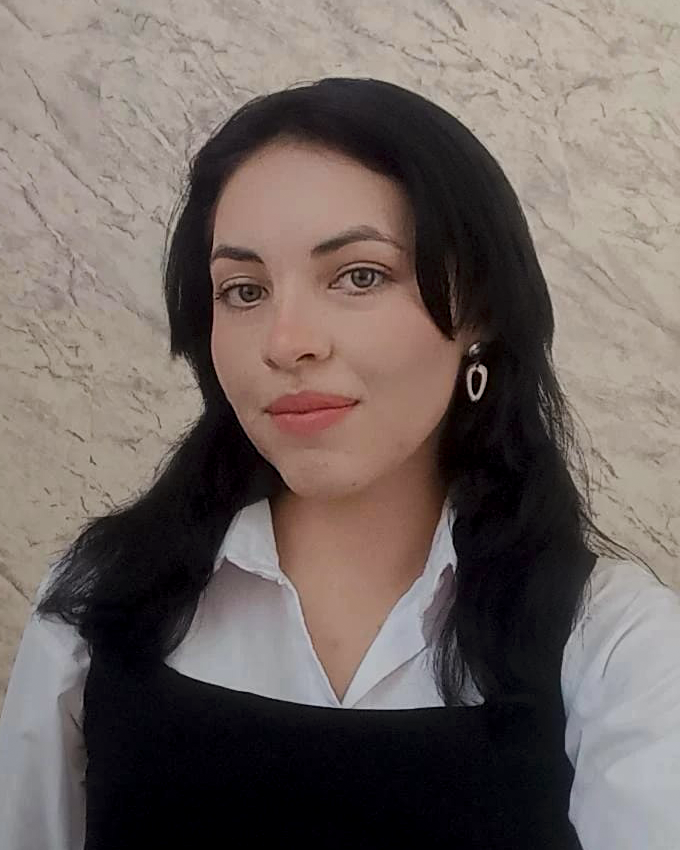
Have you ever noticed the impact colors have on the way we look? Especially when it comes to wearing them. They can either make us shine and look effortlessly radiant without a drop of makeup or they can work against us even with a full face of makeup.
The color is the first thing we notice about our image. The shape, lines, and other details are next. Using color for your own purposes is an art; since it allows us to focus on the details and parts of our body that we want to accentuate, we can change the figure’s proportions and even create moods.
In fact, some colors interact perfectly with one another, and nature offers us an endless number of these examples, such as the changes in the landscape depending on the seasons, the fresh colors in spring, the soft tones in summer, the earthy nuances of autumn, and the cold touches in winter.
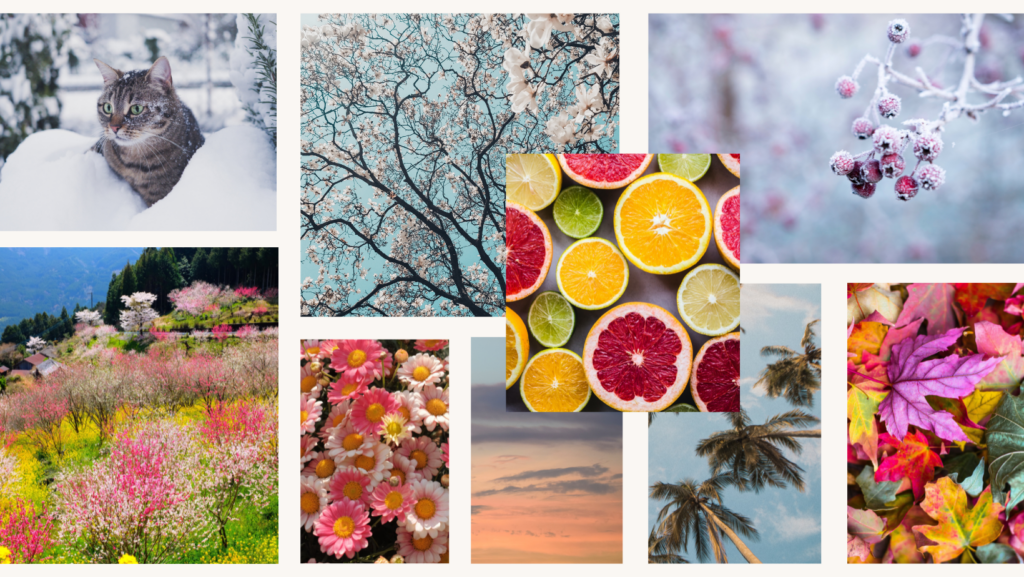
The clothes we wear must highlight our beauty, make our eyes shine, and accentuate our hair’s color and tonal play. All of this is possible with colors and their variations. With this quiz, we’ll help you figure out your ideal color palette based on your natural characteristics, so stick around a little longer to learn the best ways to incorporate color into your looks!
But before we start the quiz, let’s go through some things you should know about colorimetry.
Colorimetry is analyzing colors and how they interact with our physical appearance. Personal colorimetry describes how each person has a color palette that complements and enhances their innate beauty. This is related to our hair color, brows, eye color, skin tone, blush, veins, freckles, and other features.
Each individual has a unique palette of hues. Knowing this will allow you to select clothing, makeup, and accessories in tones that compliment you and make you look radiant.
When colors don’t match up with your appearance:
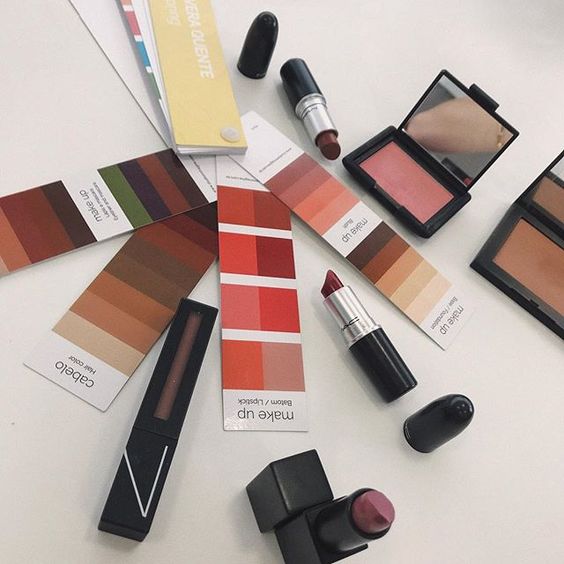
However, once you’ve discovered your color essence, you can:
♡ Highlight your natural beauty
♡ Among such an abundance of clothes in stores, choose yours quickly
♡ Efficiently select the appropriate colors for clothing and accessories
♡ Easily combine clothes by color. Build a wardrobe where all the clothes match each other
♡ Know how to easily distinguish the different shades of color and choose the one that best suits you
♡ Make cheaper clothing items look expensive and luxurious because they harmonize with your appearance
♡ Bring your appearance to a beautiful and harmonious aesthetic image
♡ Appear well-rested and lively, even at the end of your day
Knowing your chromatic type is not a whim. It is not something that only the most excellent stylists should be aware of. It is a must-have for everyone who wishes to avoid annoying screw-ups (when buying clothes, picking a hair color, and so on).
There are several methods to know your color palette, however, many of these are not very accurate and are extremely limited, which is why we will use the division by seasons to identify your color palette. Because, as previously stated, it is more logical to direct us toward a technique based on nature itself, which transitions naturally, is rich, beautiful, and abundant. We all fit within nature’s parameters.
This method is divided into four main categories (seasons), further subdivided into three groups, creating 12 possible combinations, each with unique characteristics that help us confidently identify our best color palette while also providing an excellent analysis to better understand our personal features and traits.
The twelve seasons are:
♡Bright spring
♡True spring
♡Light spring
♡Light summer
♡True summer
♡Soft summer
♡Soft autumn
♡True autumn
♡Dark autumn
♡Bright Winter
♡True Winter
♡Dark Winter
Learning to use your natural color palette, and knowing your essence or kibbe, will help you manage your closet better, feel more at ease while picking clothing, and dress like a genuine fashionista.
So if you’re ready, let’s see your ideal season!
First, you will discover your main season and then we can move on to the subdivisions to be even more exact. Remember to analyze your characteristics well to answer each question in the most accurate possible way.
We recommend that you write down your responses. So, take a pen, and let’s begin!
Write down all the letters you see in the answer you chose.
a) d) I tan more easily. My skin has undertones of golden yellow and earthy browns or greens. I look good in yellow
b) c) I naturally burn first. My skin has undertones of pink and blue. I generally look bad in yellow.
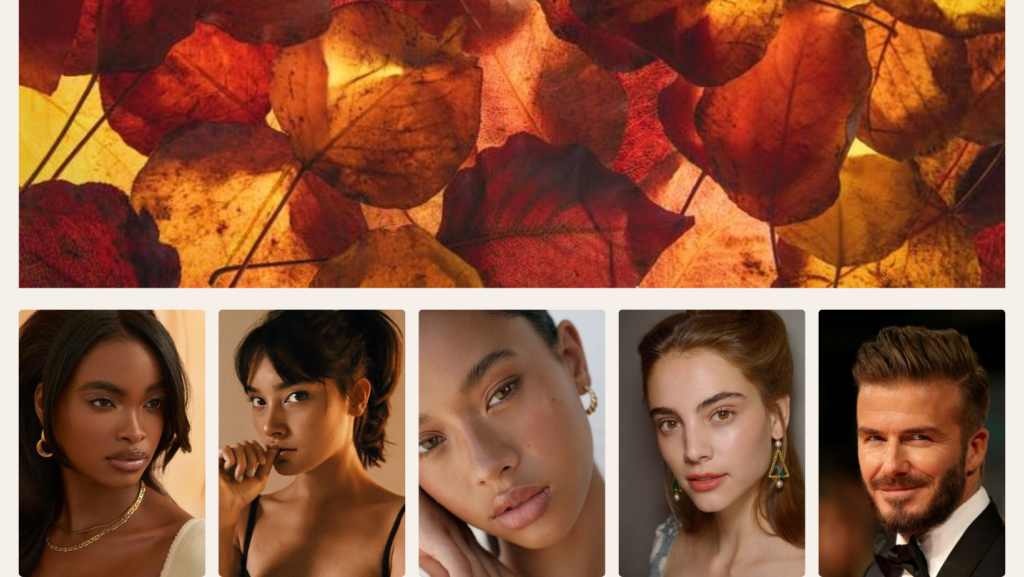
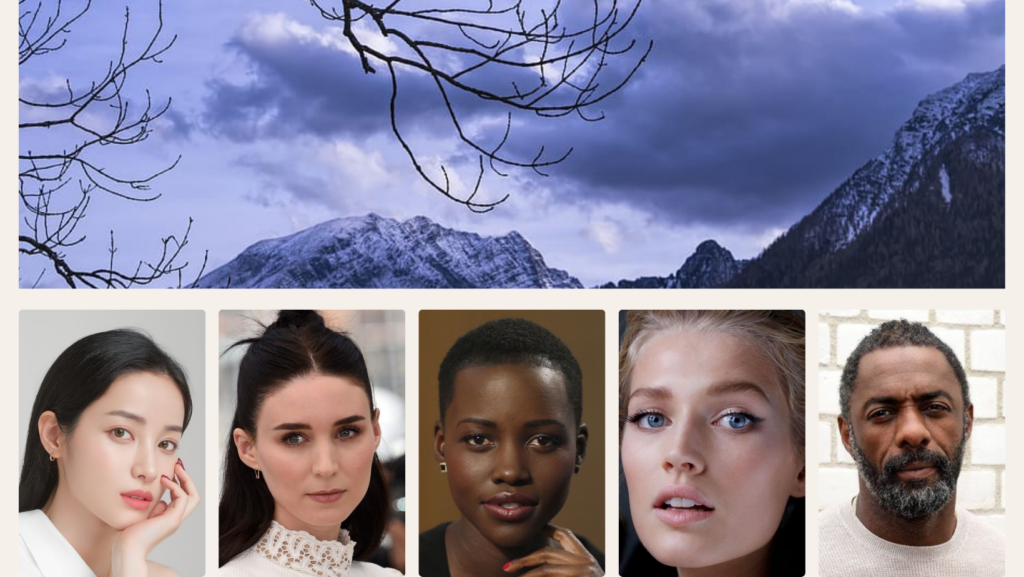
a) It has shades of peach, ivory, golden, and dark beige (no color on the cheeks) or golden black.
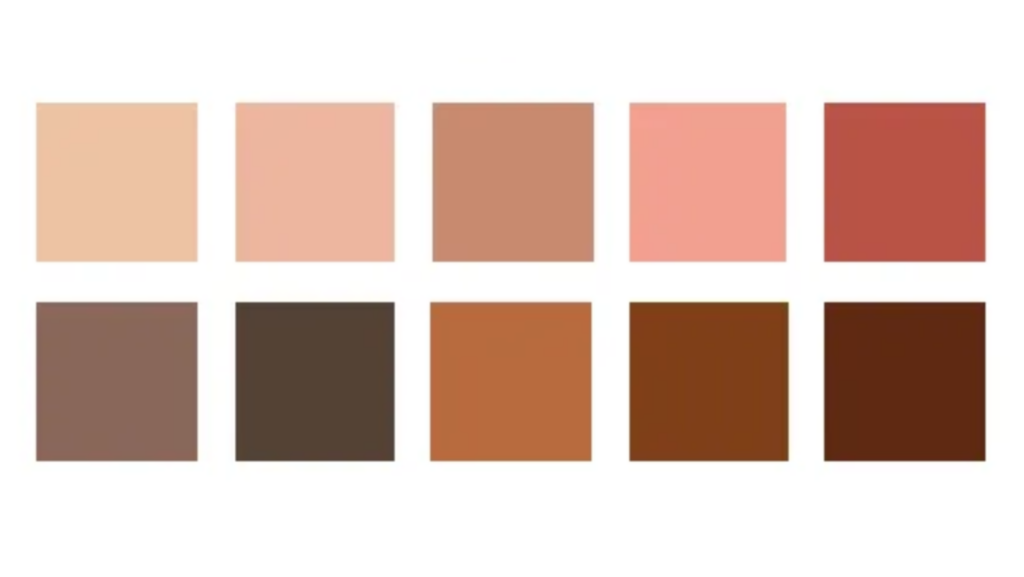
b) Black and brown or pale skin tone bordering on beige. Very light skin, and a uniform tone. Always with peach, pink, or gray subtones.
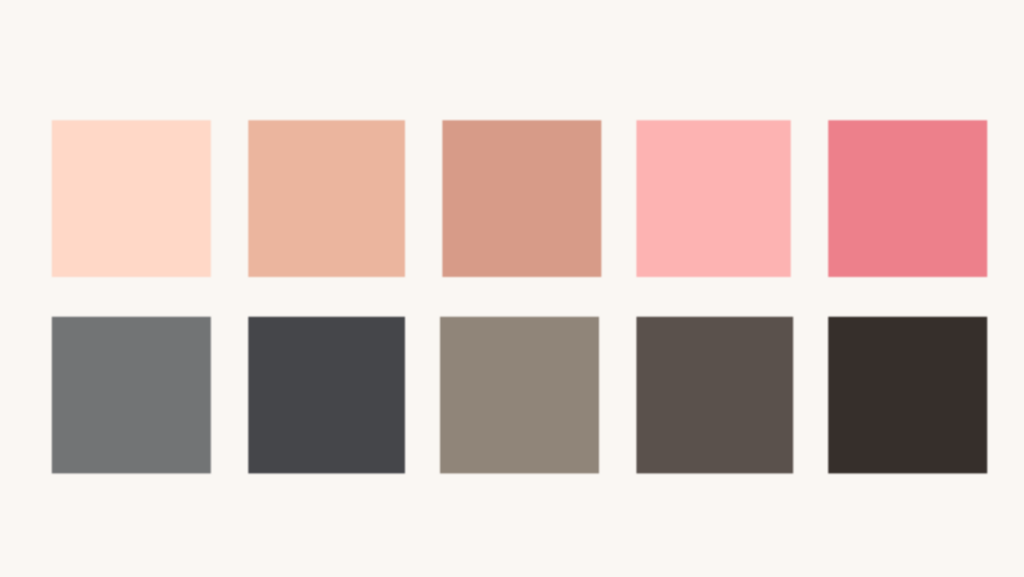
c) Beige, pinkish beige, black or white with grayish, pinkish, or bluish base tones.
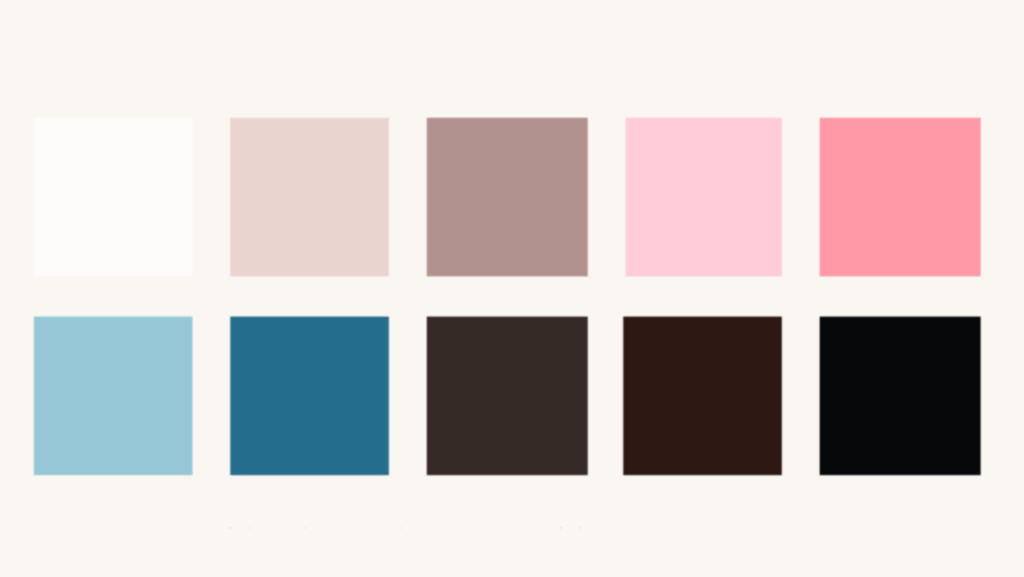
d) My skin is usually ivory, peach, rosy peach (with purple knuckles), warm brown, black or beige, with light golden tones. It can also have olive subtones.
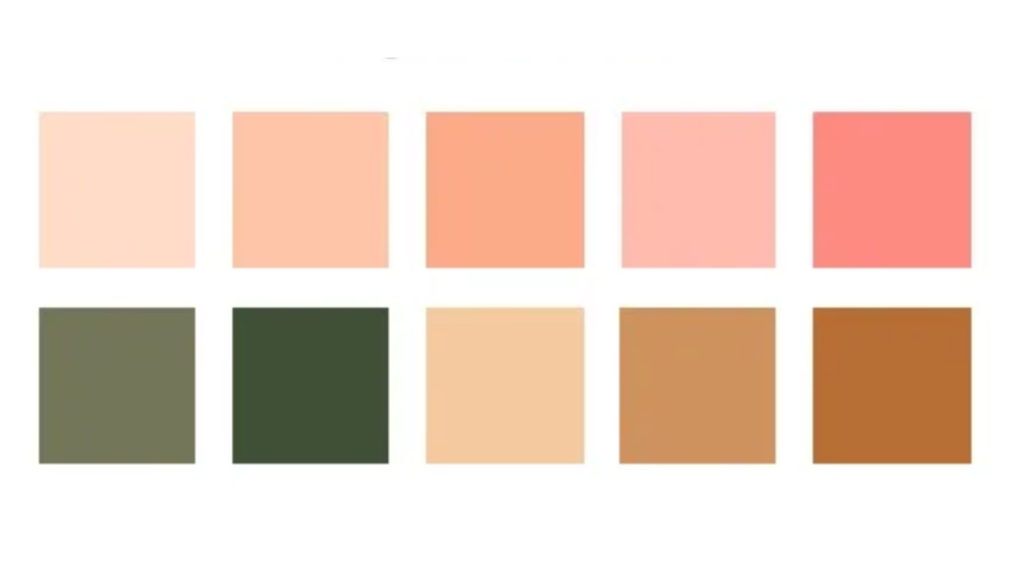
a) They are usually brown or gold.
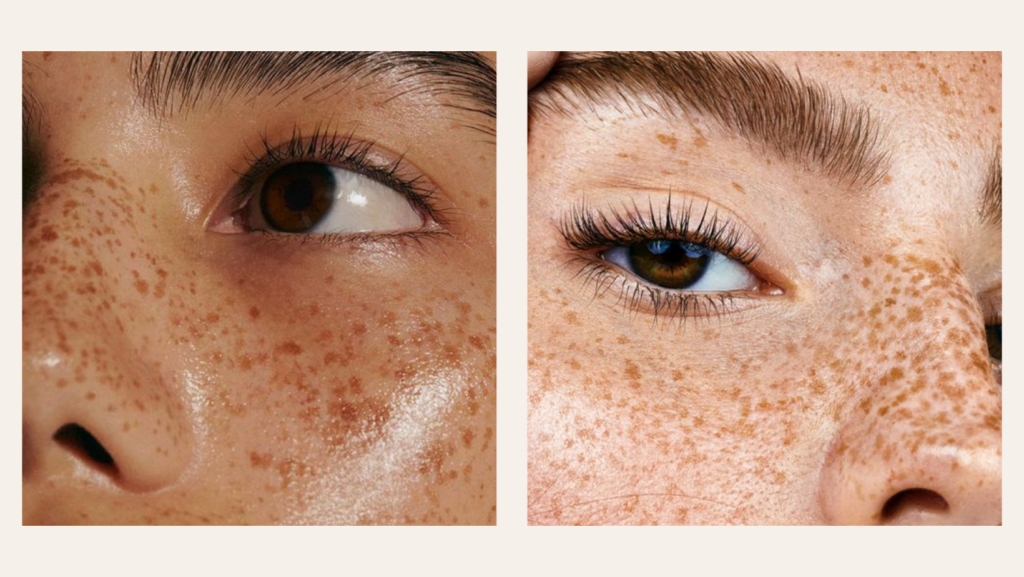
b) They are dark brown
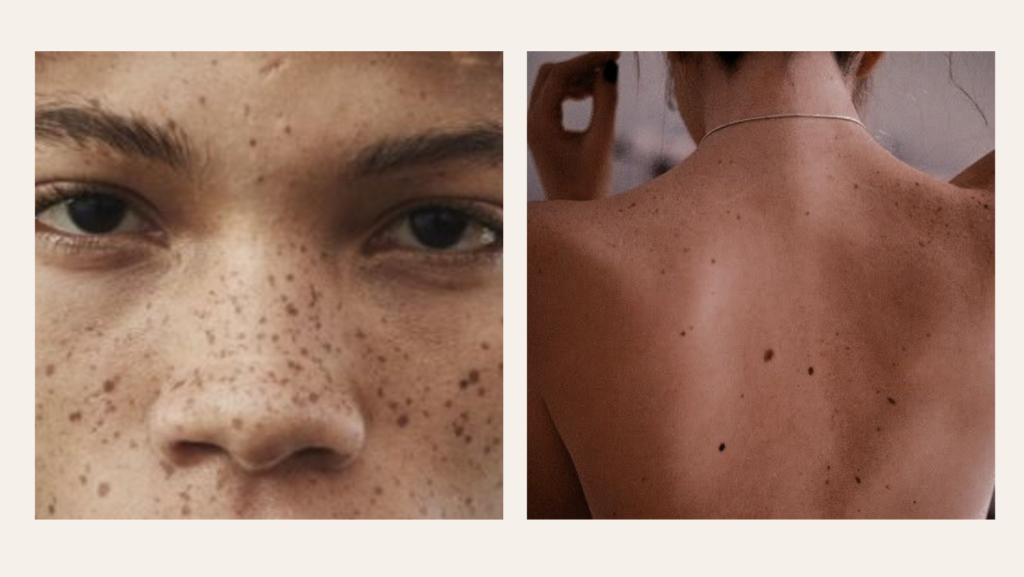
c) They are gray or grayish
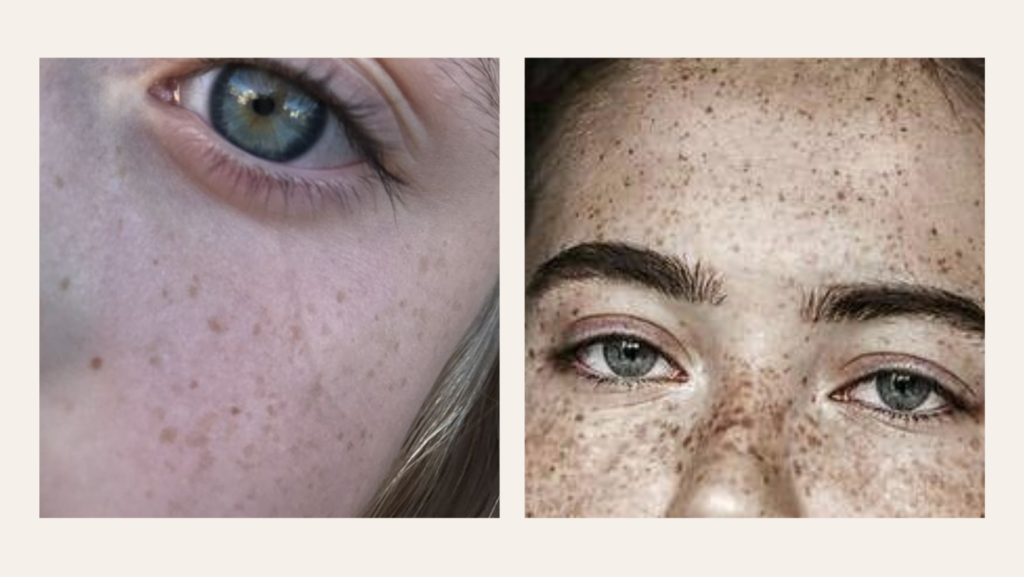
d) They are golden
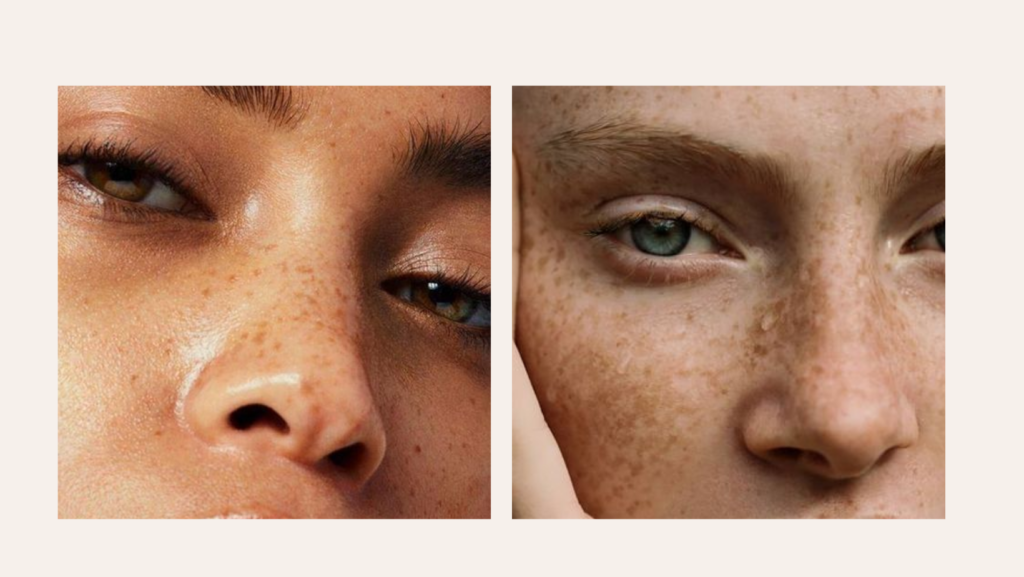
a) Red, copper, brown, or golden blonde. Gray or white with yellowish tones, chocolate brown or black with reddish or golden hues.
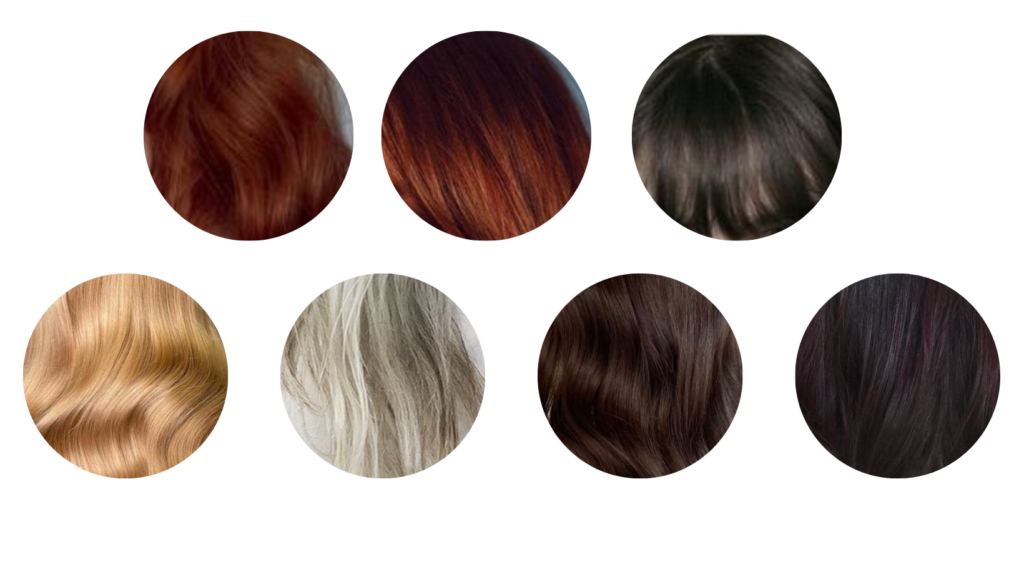
b) Platinum blonde, ash blonde, light brown, brown with a touch of reddish or gray bordering on blue.
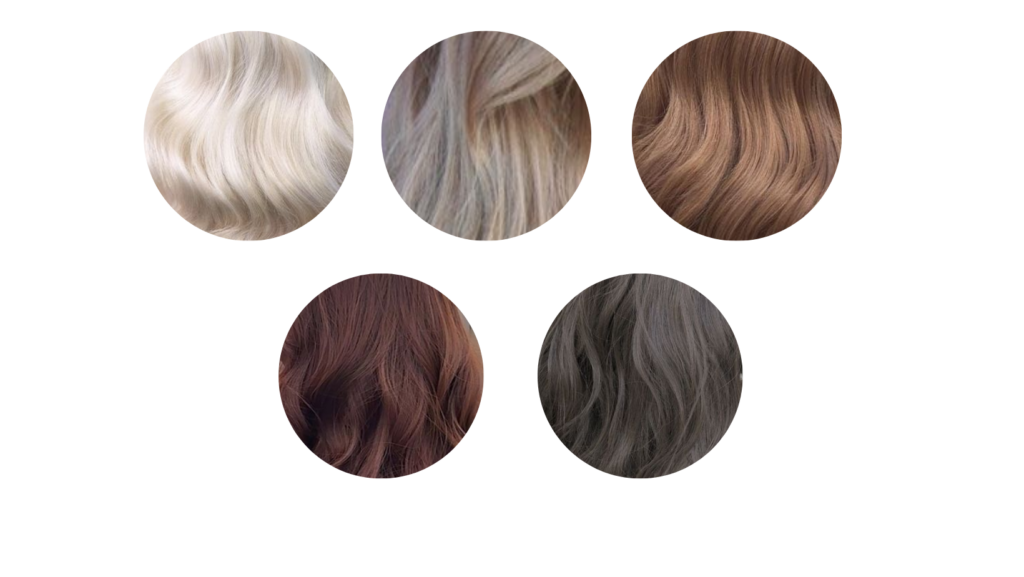
c) Blue-black, dark brown or with reddish reflections, silver gray, white, platinum blonde.
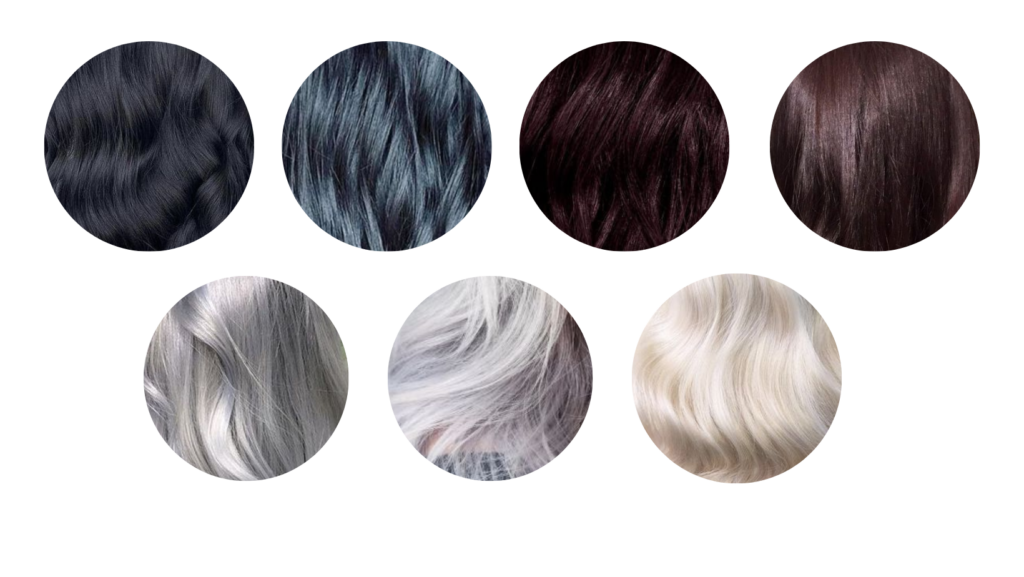
d) Light or golden blonde, yellow blonde, honey or raspberry or redhead. Chestnut and brown with golden features, golden gray or creamy white.
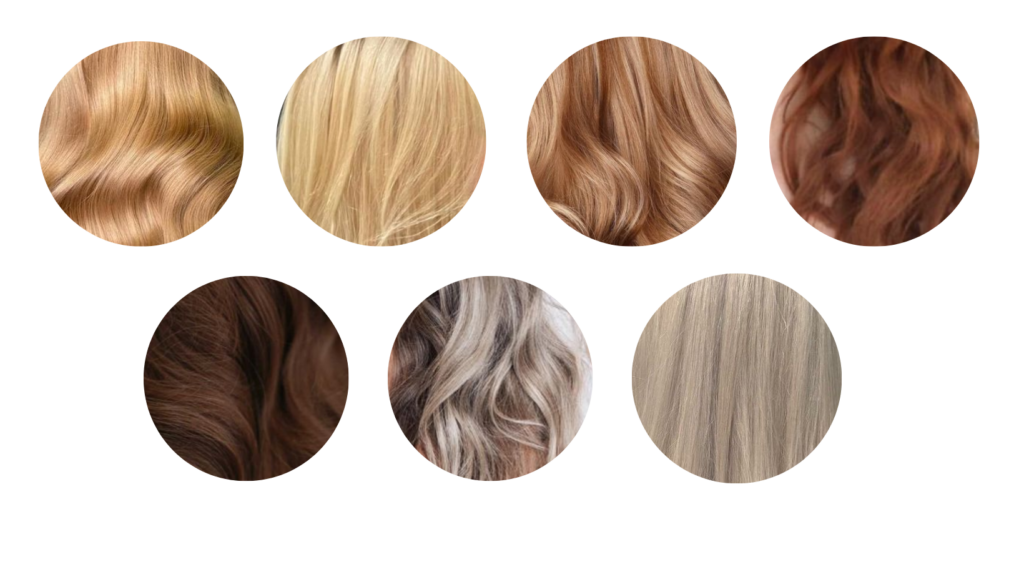
a) Hair with dark golden or copper highlights, gray hair tends towards yellowish-white and not bluish-white.
b) c) Hair grays sooner and, when it does, takes on a bluish pearl or silvery tone.
d) Reddish, orange, or golden flashes. Or has your hair darkened quite a bit with age?
a) d) Olive green
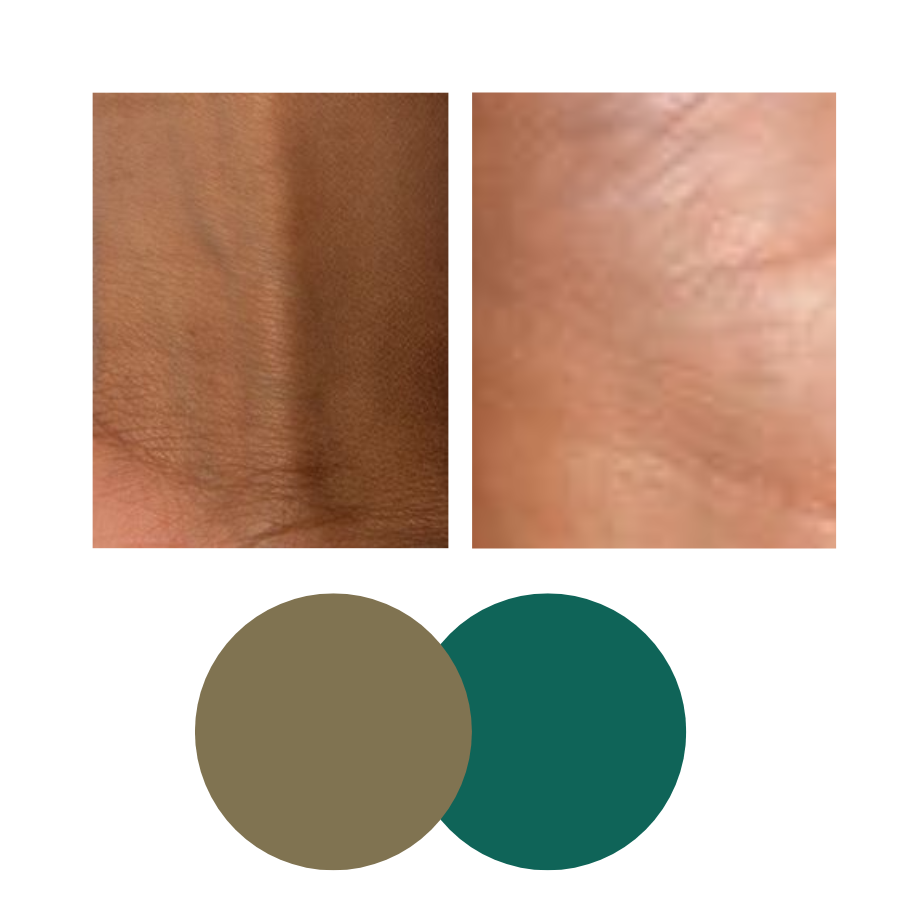
b) c) Blue
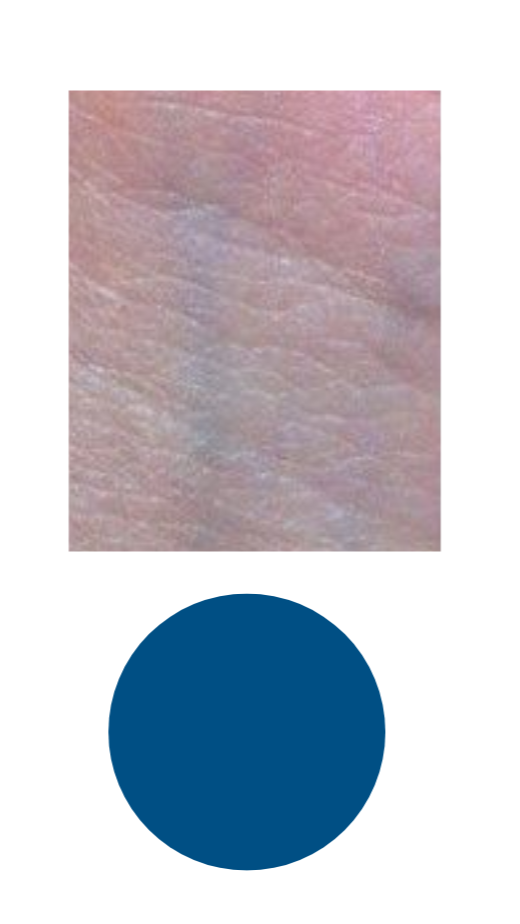
c) Purple-blue
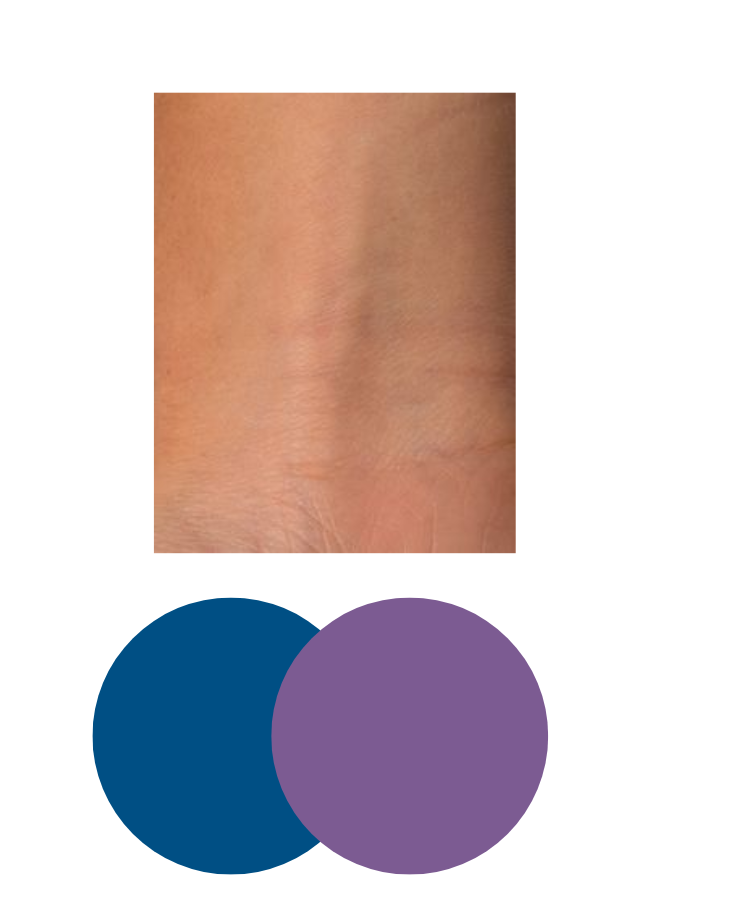
d) Blue-green
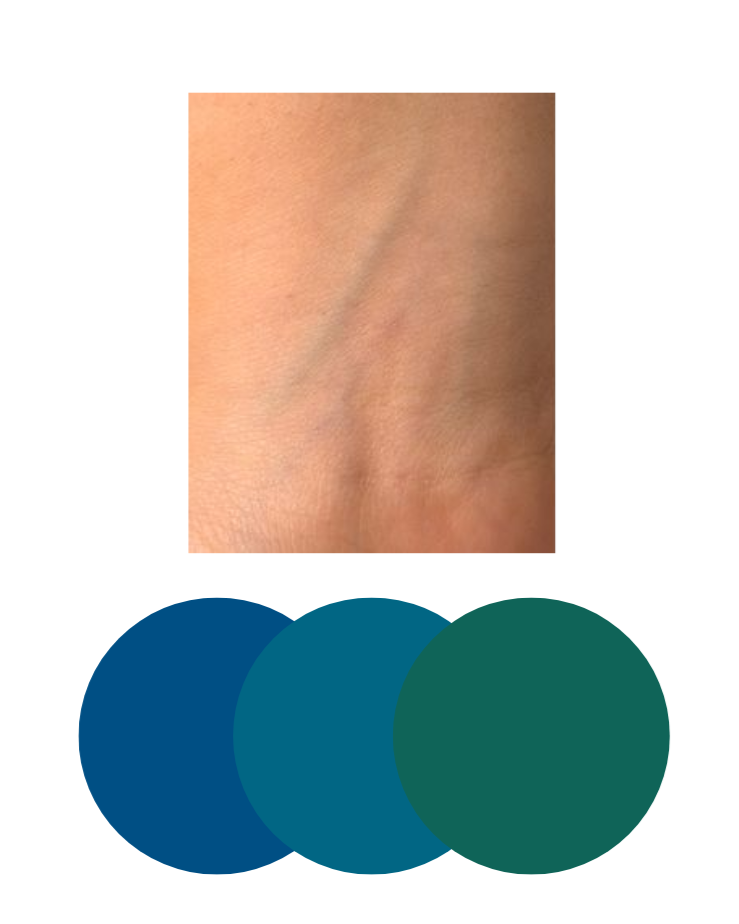
a) c) You don’t blush easily, and the color of your face is quite uniform. You don’t blush when playing sports or when the temperature changes, you rarely blush
b) d) Your skin takes on color quite easily. Skin with a delicate appearance and, on many occasions, is sensitive, especially on the face.
a) Brown eyes in dark, golden, or light tones. Honey, olive green or green color with golden or brown tones.
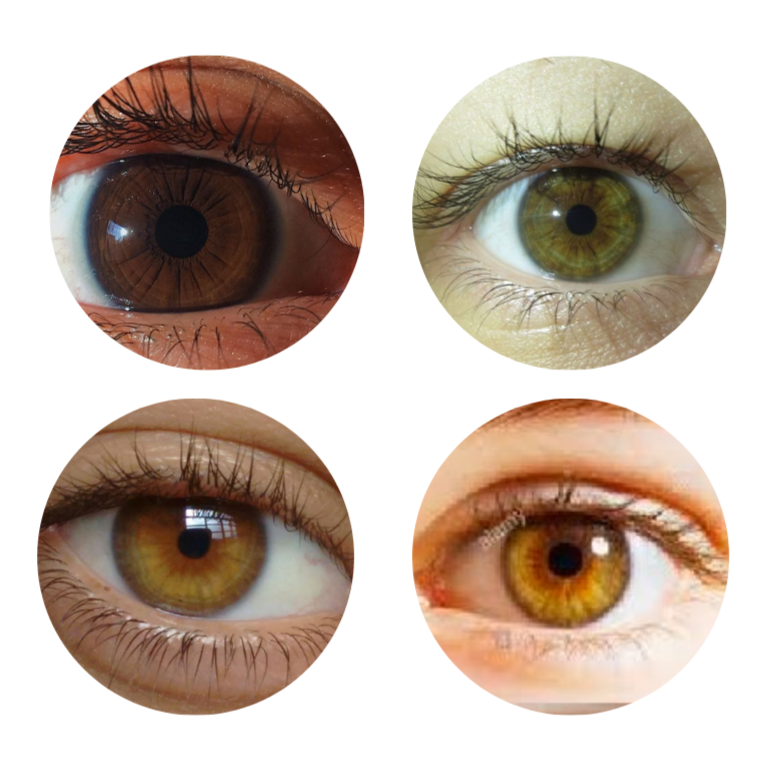
b) Eyes light blue, green, or with a subtle shade of gray around the iris. Light brown, grayish, or aquamarine blues that change tone depending on the light or the clothes they are wearing.
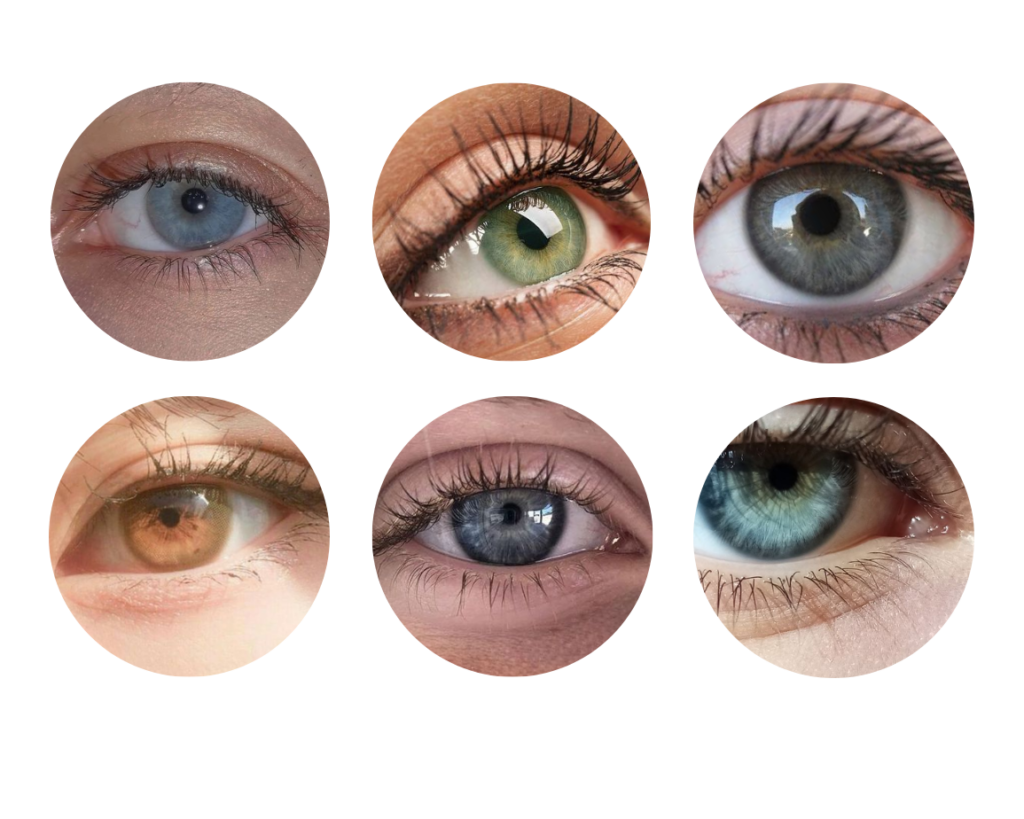
c) Reddish brown, light brown, black, dark or grayish blue, grayish green
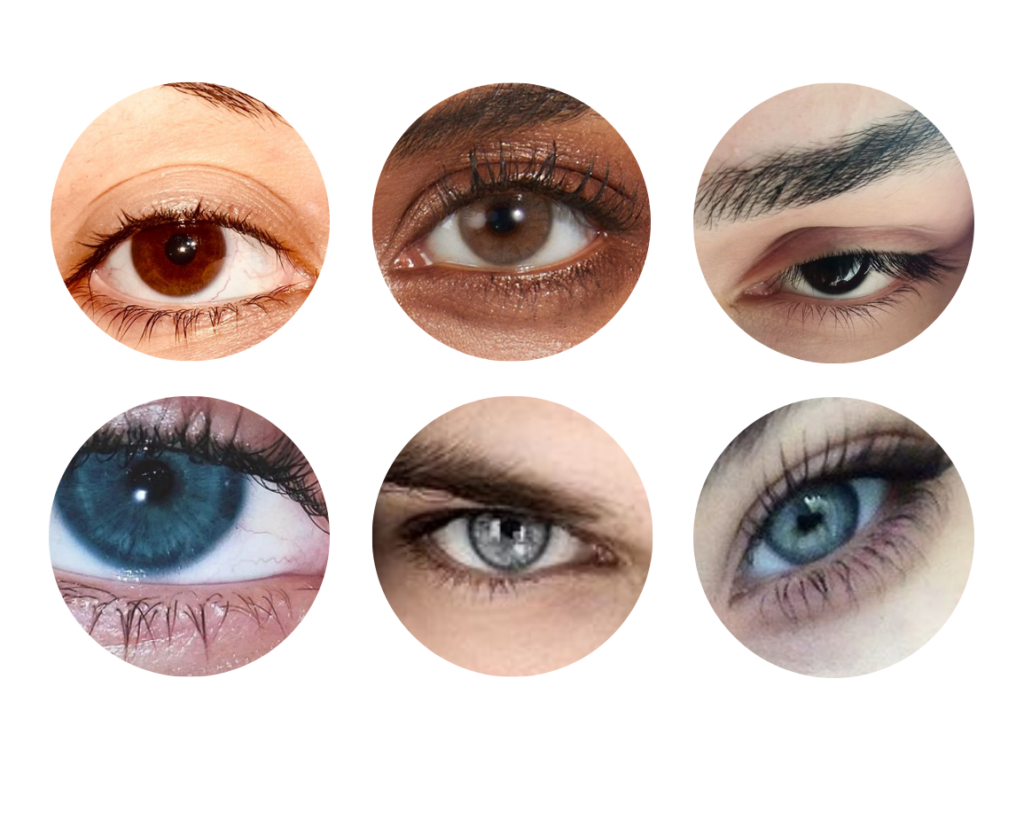
d) Blue eyes with white or gold stripes, watery blue eyes, grayish steel blue, green with golden spots, light green, aqua green, bluish green, and golden brown.
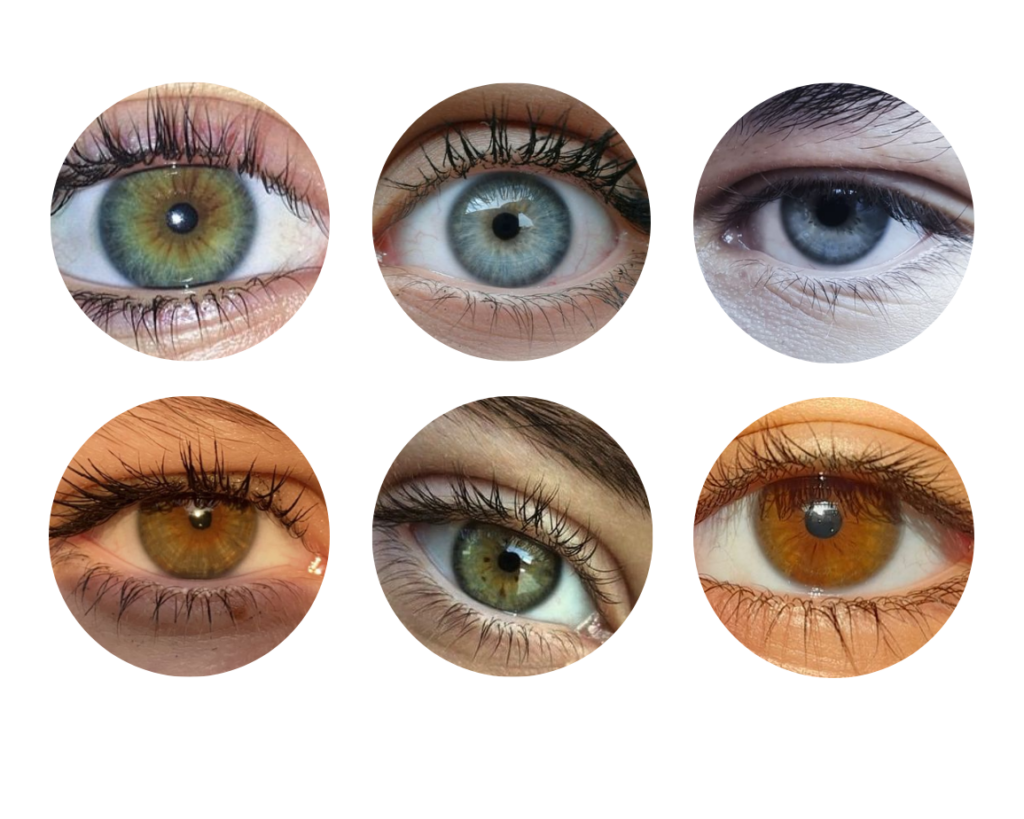
a) Rich warm colors. Ocher, brown, green, and brown tones. Blues such as turquoise or petrol blue that has yellowish tones in its composition, orange-reds, beige, camel, brown, and khaki green.

b) Muted cold colors. Pastels, grays, especially those with a bluish tone, and soft whites (not bright or yellowish whites). Dusty blues in almost all shades.
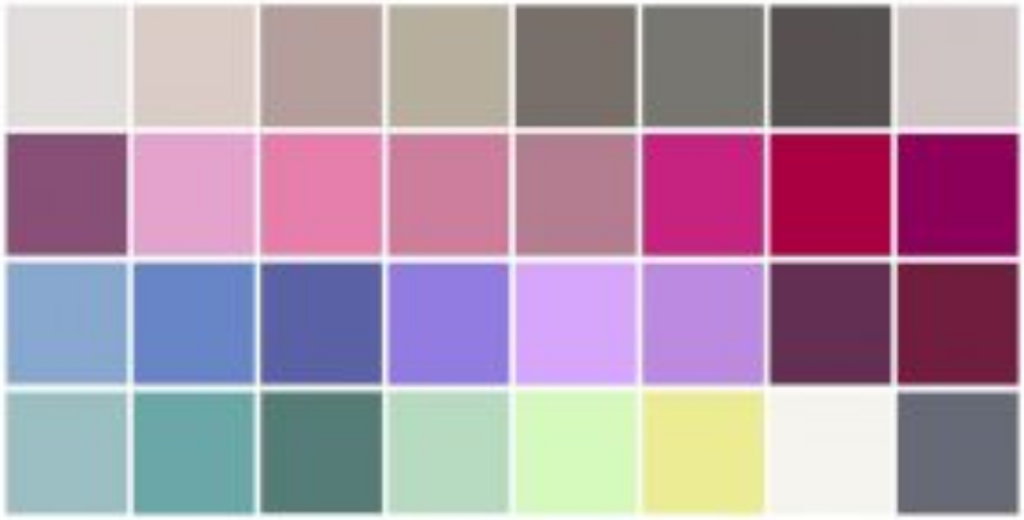
c) Intense cold colors. Pure white or black. Gray in almost all its shades, and navy blue.
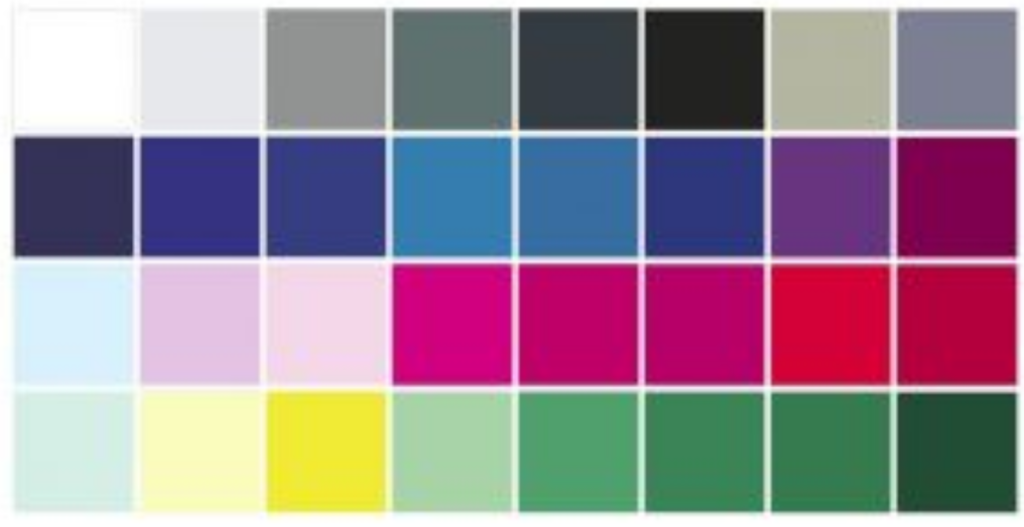
d) Orange and pink colors from peach to reddish-orange through different shades of coral. Yellowish blues such as turquoise, aqua, or light clear navy, soft and bright golden greens, yellow-green, ivory, sand, light beige, camel, golden brown, warm light gray, and stewardess blue.
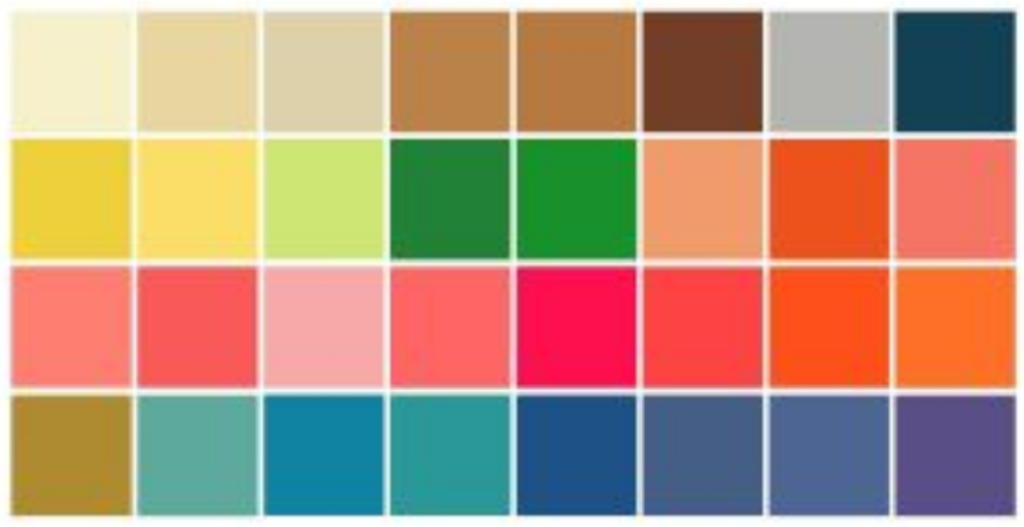
a) d) Golden
b) c) Silver
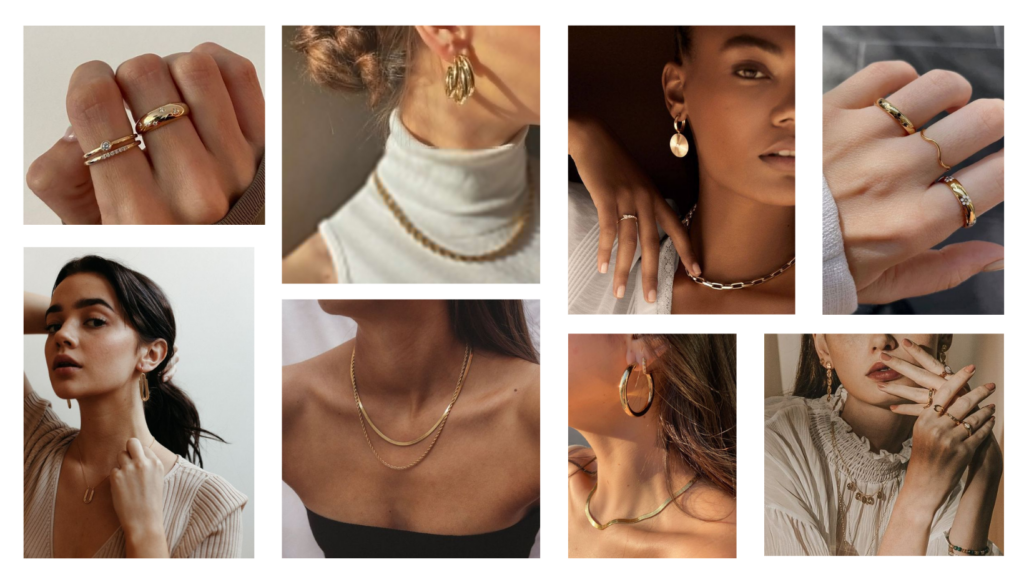
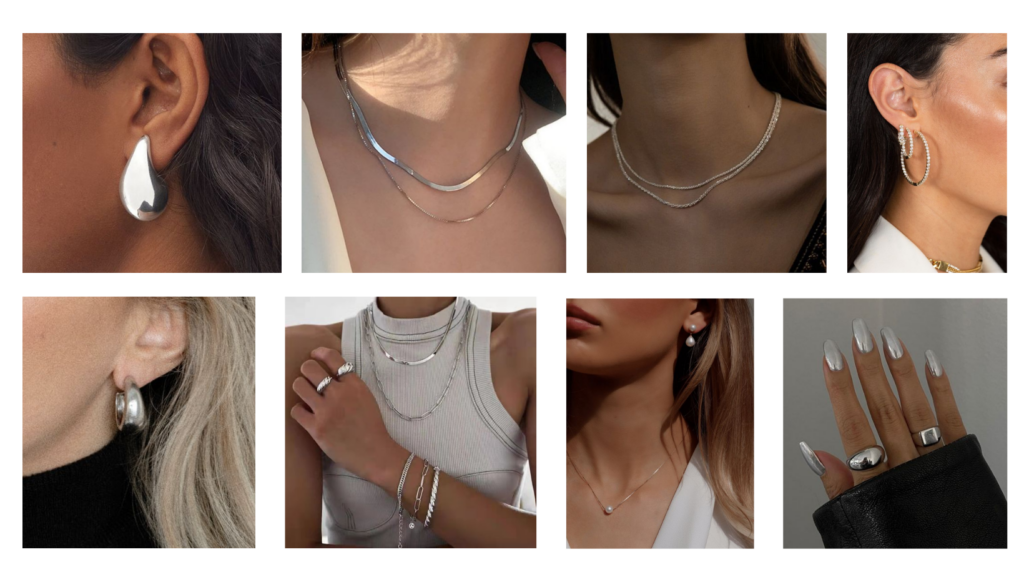
a)
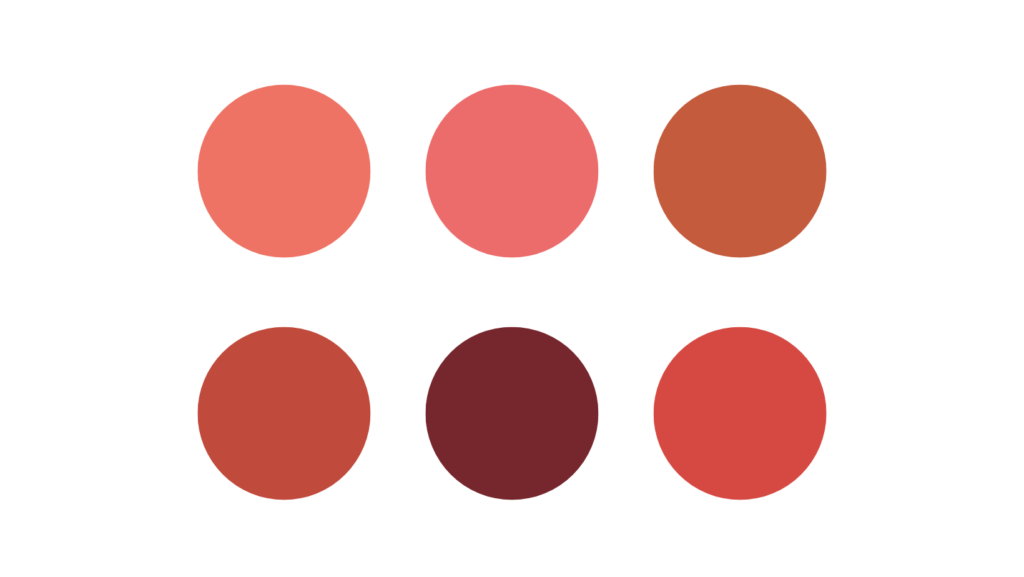
b)
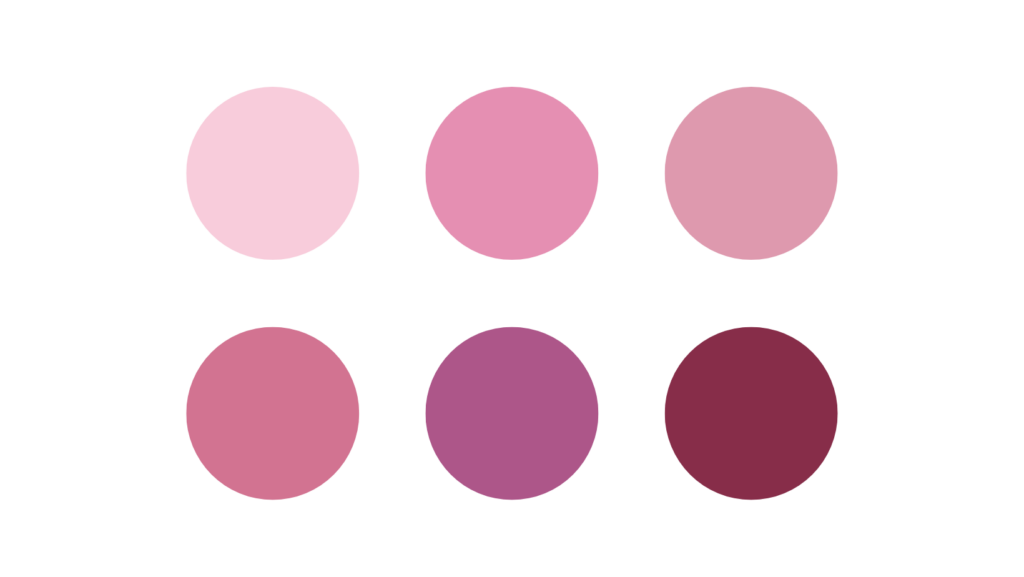
c)
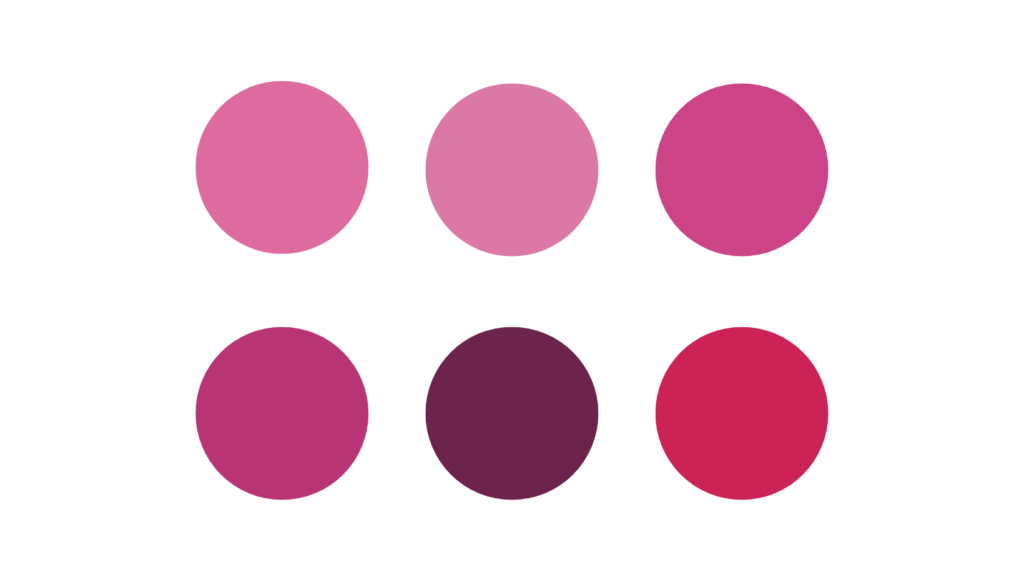
d)
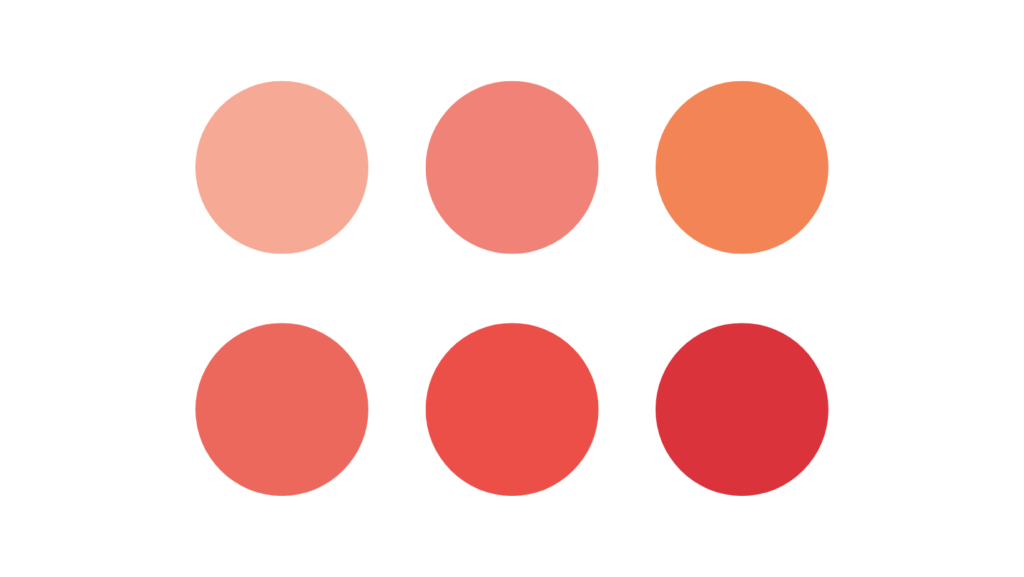
a) Olivia Palermo, Eva Mendes, Hugh Dancy, Halle Berry, Julia Roberts, Mariah Carey, Emily Ratajkovski, Dev Patel
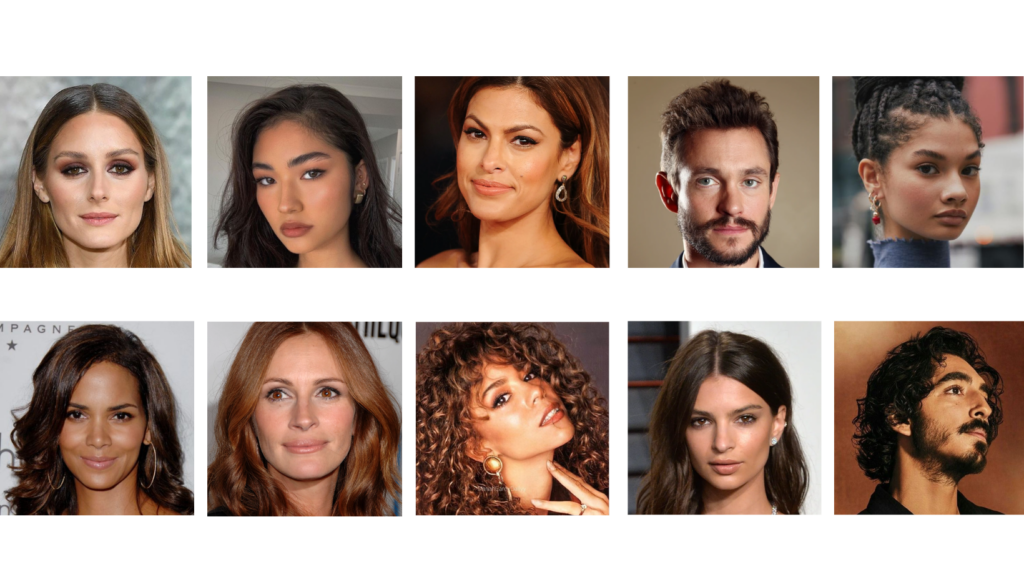
b) Diane Kruger, Letitia Casta, Bradley Cooper, Elle Fanning, Denise Vasi, Rihanna, Ellen Pompeo.
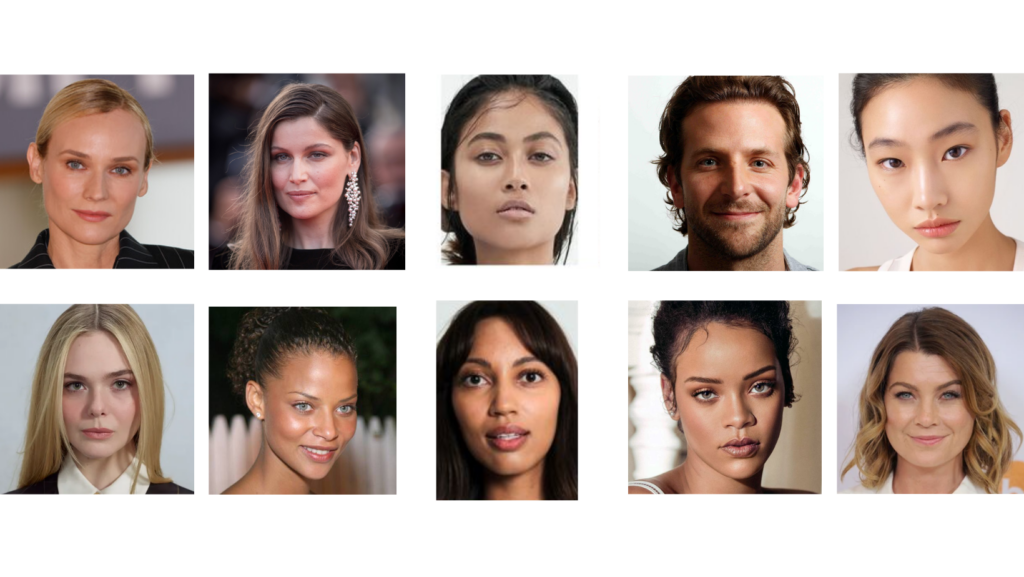
c) Monica Bellucci, Zooey Deschanel, Anne Hathaway, Tom Cruise, Simone Ashley, Lupita Nyong’o, Naomi Campbell, Salma Hayek, Amal Clooney, Lucy Liu
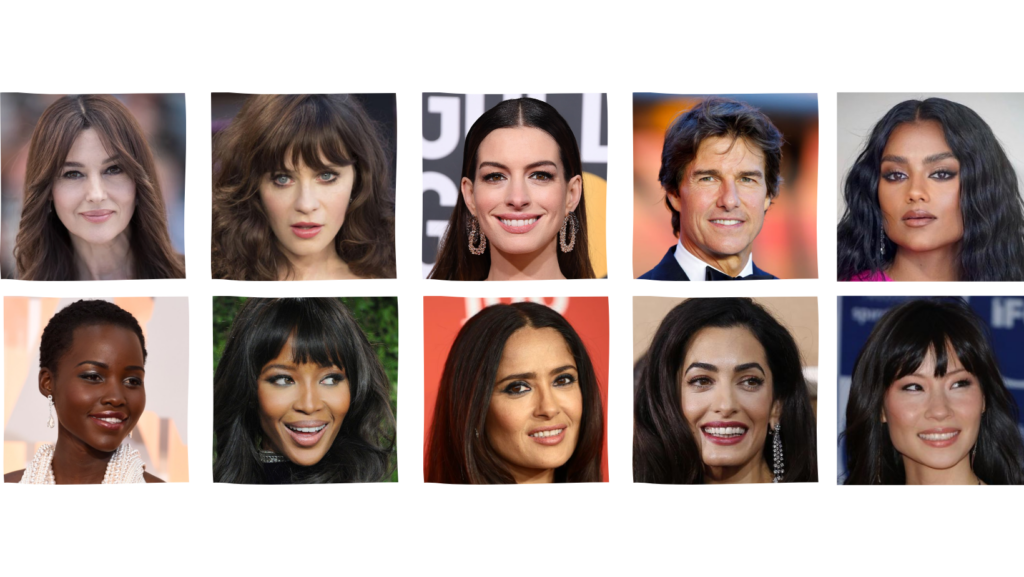
d) Jada Pinkett-Smith, Margot Robbie, Kate Middleton, Amy Adams, Blake Lively, Jaz Sinclaire, Alexa Chung, Owen Wilson
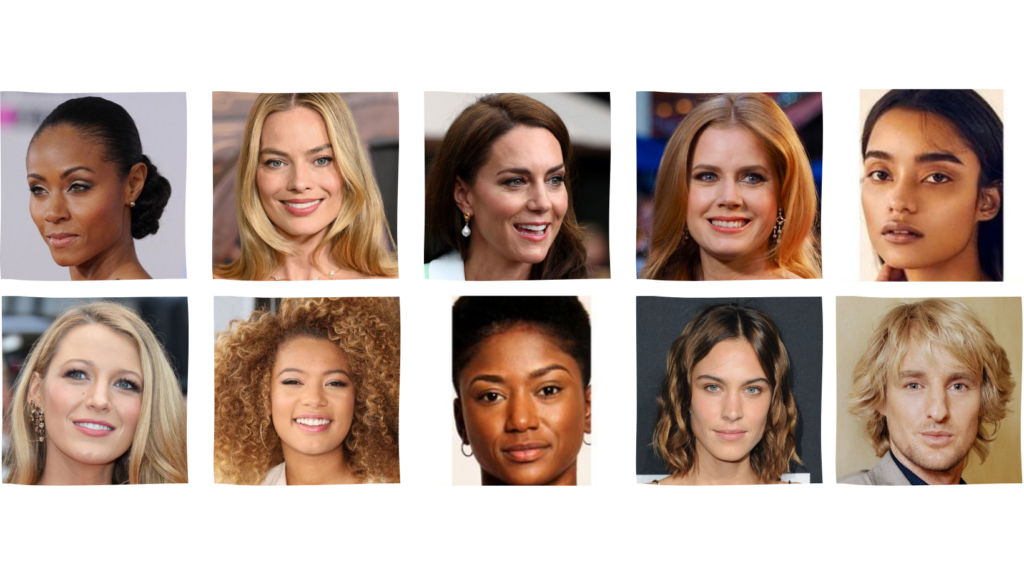
If you are an Autumn that means you have a warm skin tone and hair that is typically darker than medium brown.
You have a lot of depth to your coloring with golden undertones including a warm undertone to your skin. You have an overall muted and warm look.
Read more about the personal color palette in the Autumn full guide!
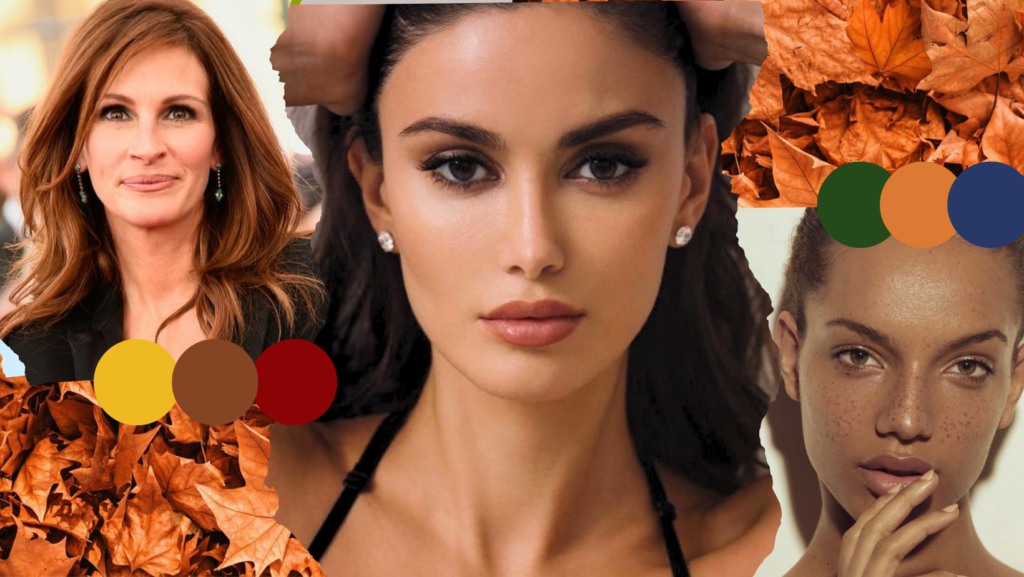
If you are a Summer type, that means you have soft, delicate features, often with pink, blueish, or grayish hues. Summers don’t need much contrast in their colors and tend to favor soft, neutral colors.
Read more about the personal color palette in the Summer full guide!
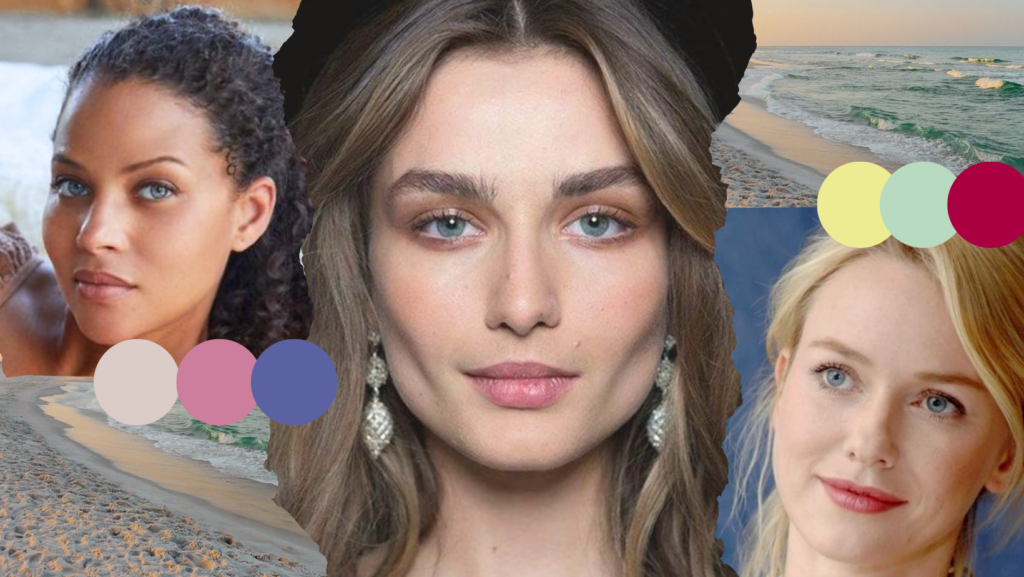
As a Winter you have a lot of depth to your coloring with a bluish or pinkish undertone.
You have a high contrast between your hair color, eye color, and skin tone or an overall deep look. Winter coloring is very vibrant, which is why you stand out in black and other brilliant colors.
Read more about the personal color palette in Winter full guide!
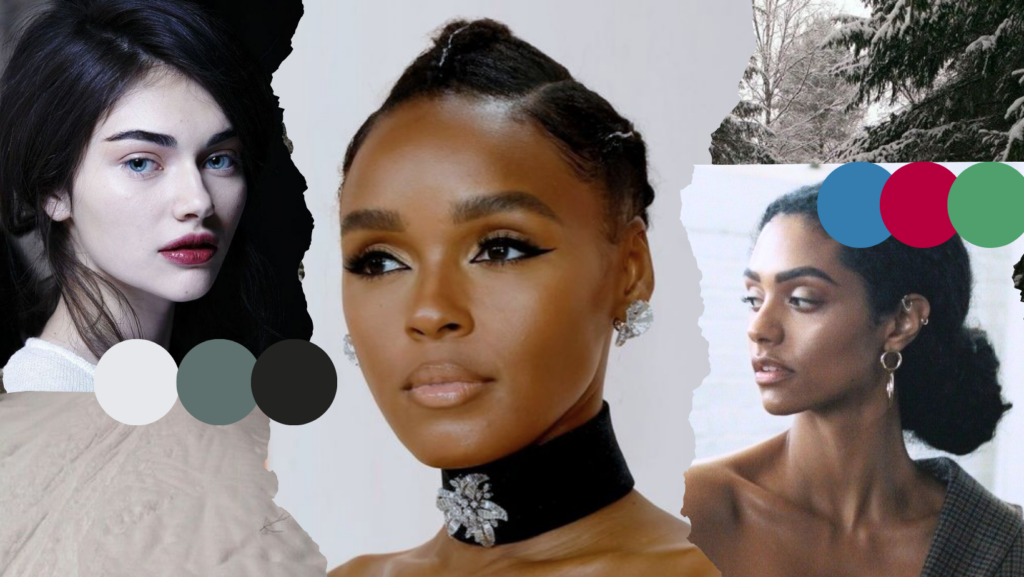
You are a Spring if you have a warm skin tone and hair that is lighter than medium brown. You have a minimal level of contrast between your hair, skin, and eye color. You may have dark hair and pale skin, but you should also have clear eyes. Your overall coloring has a clean, warm, and golden undertone.
Read more about the personal color palette in Spring full guide!
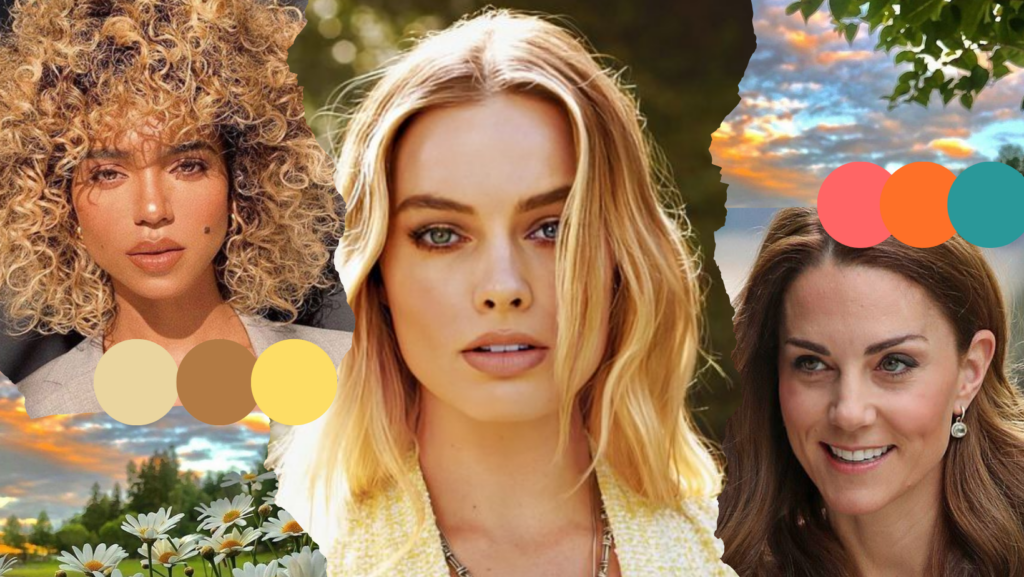
Become an insider and have access to freebies, tutorials, tips, discounts & more!
Read our Disclaimer policies, Privacy Policies & Terms & Conditions.
Hi, I seem to be equal spring and summer, is that possible?
I also feel like neither gold or silver really suits me more, rose gold tends to be my go-to,
Thanks 🙂
Hi Megan!
You might have neutral undertones, which would explain why you feel like neither or gold suit you better. It makes me think that you might be Light Spring or Light Summer, they are sister seasons, you could try both to see which one is more flattering on you.
-Dani
Hi! I counted out my letters and I got a pretty even amount for all (4 a’s, 4 b’s, 4 c’s and 2 d’s). Not sure where that leaves me… Any idea what that could mean?
Hi Brenda!
It depends on where those letters are because you could have more of a sharp structure or a soft yang structure and it changes your results a little bit.
Based on the letters you could consider Dramatic, Flamboyant Natural, Pure Natural, or Dramatic Classic.
It’s difficult to give you a more specific result based only on this but hope this helps you to guide you on a great direction.
I have a mix of summer and winter!!!
10 A’s which means I’m Autumn!!! A hint of Spring 5 D’s. Overall, I’m an Autumn
Cool quiz ♥️
Heyyy! So i took the test and i didn’t have one more than the other i had a tie between A and B would that make me suitable for both?
Hi Kayleigh,
Yes it could mean that you might be either of those seasons or that you are between seasons, which means that your subseason might be Soft Autumn or Soft Summer, based on the 12 seasons.
-Dani
neutral cool-warm, but warmer colors look better. only gold jewelry, although I feel that not too bright silver is also good.
My skin has a peach undertone.
Hello!
I need your help! I can’t find my season!
My parameters: hair color with color depth 6-7, olive green eyes, olive skin.
I’ll would be very greatful!
Hi Reka!
It’s difficult to say just by reading your description and not looking at you but I think you could be on the Autumn season. Since your skin is neutral you could be soft or dark autumn. You might want to try those, although, I wouldn’t discard Light Spring.
Hope this is helpful for you but if you’re still stuck on figuring out your season, we would love to help you with our Seasonal Color Analysis 🙂 If this is something you would like, don’t hesitate to contact us here.
Hello! 🙂
Thanks for the reply.
Can a dark autumn be darker with golden blonde hair?
Because as a child I had darker golden and lighter brown hair, later it darkened to medium brown.
Hi I took the test. I’m definitely a warm tone- more like Autumn. But you don’t show rare deep blue eyes that are in the Autumn category. Spring eyes are bright and clear. My eyes are darker. I have reddish hair but look great in auburn when I dyed my ha ir. Now it’s creamy gray mixed with red highlights. The problem is I saw a lot of green veins and found blue on my upper arm. My hands they look green. It’s confusing. I usually think I’m a tree , particularly Maple trees. Yellow, orange, yellow greens, brown and some have dark purple like aubergine. Please help me.
Hi Geraldine!
Based on what you describe, I’m thinking you could try True Autumn or Dark Autumn. Depending on what you look best in you could be either of those, for example if you feel better in rich colors you might be True Autumn, but if you feel better in dark colors you might be Dark Autumn. You could try comparing in you two shades of pink, one that has a peach tone (TA) and one that is more cranberry (DA), as see which one looks better on you.
Hope this helps you find you season, but if you are still struggling we also offer a color analysis consultation in case you want confirmation of your season, we would love to help you if you are interested. You can contact us here. – Dani
Autumn!
A really different and enyoyable quiz.
Thank you!
Hi,
I have a question regarding the connection between seasonal colour palettes and Kitchener Style Essences. So from previous blogs I read, I understand that some Style Essences are more likely connected to certain IDs, for example, the Dramatic Style Essence with the Kibbe Dramatic and vice versa. However, considering that contrast and colouring seem to play a role in the style essences, would you say that each style essence and essence-blend is more likely to be connected to certain seasonal colour palettes? Thank you for taking the time to read it. Also,
P.S. youcan remove the other anonymous contnent I send earlier.
Hi there!
When it comes to Kibbe and Style Essences they do have some similarities and are somewhat connected but not necessarily, a person can be Dramatic in kibbe and not have Dramatic essence in their blend.
Yes, contrast and colors do play a big role on our style. Each Essence has a certain connection to a color palette, like you mentioned it has some relation with contrast, but the way we see it is that you can adapt that color palette from the essences to your Seasonal Color Palette. For example: if you have ingenue essence (which can normally be pastels and light colors) but you are a dark winter (cool and dark colors), you can adapt those colors into darker and cooler tones. You could just try to keep the contrast low and look for the lighter colors of the Dark Winter color palette.
Hope this solves your doubts 🙂
-Dani
Thank you. That’s helpfull.